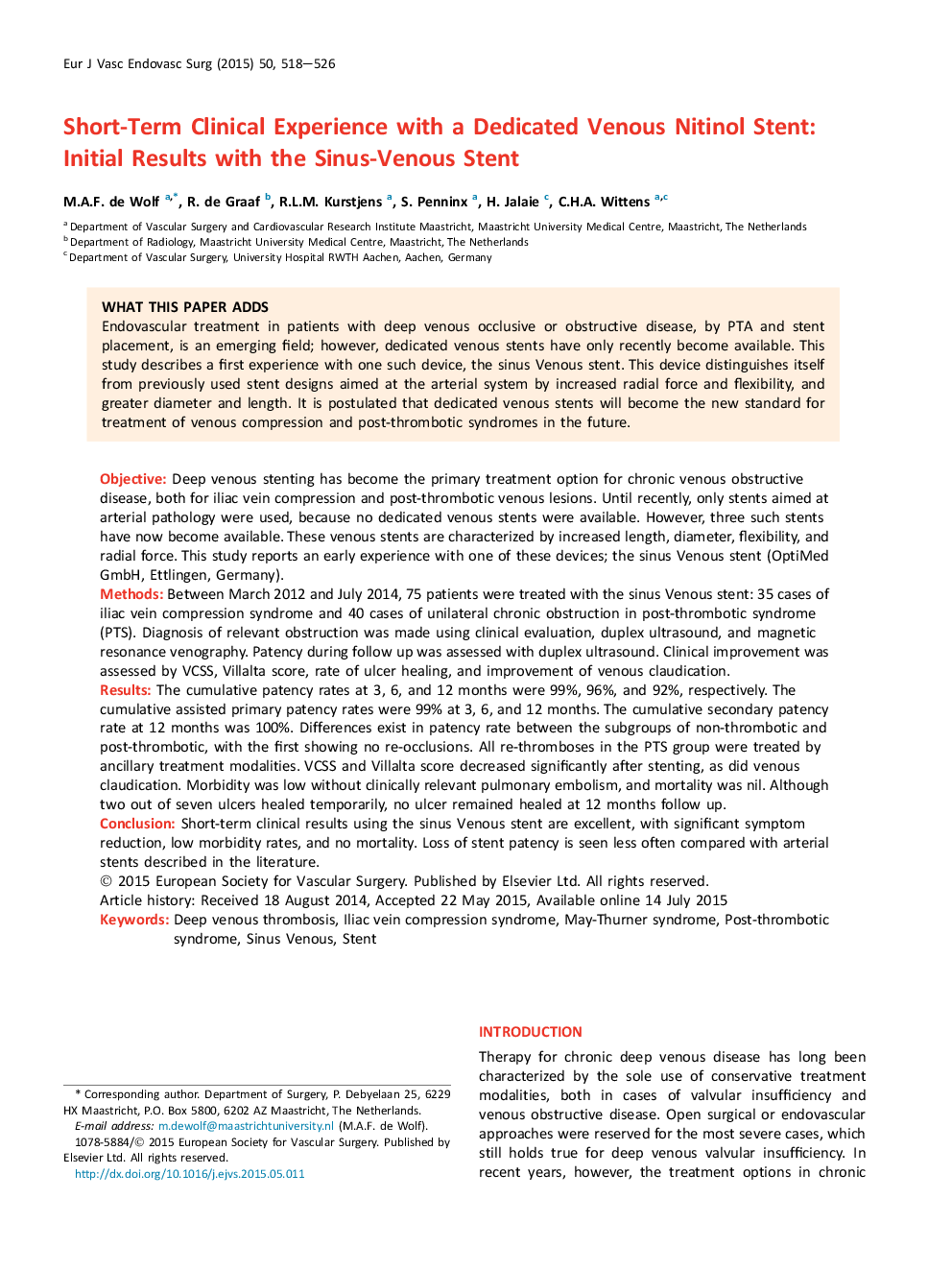| Article ID | Journal | Published Year | Pages | File Type |
|---|---|---|---|---|
| 2911961 | European Journal of Vascular and Endovascular Surgery | 2015 | 9 Pages |
ObjectiveDeep venous stenting has become the primary treatment option for chronic venous obstructive disease, both for iliac vein compression and post-thrombotic venous lesions. Until recently, only stents aimed at arterial pathology were used, because no dedicated venous stents were available. However, three such stents have now become available. These venous stents are characterized by increased length, diameter, flexibility, and radial force. This study reports an early experience with one of these devices; the sinus Venous stent (OptiMed GmbH, Ettlingen, Germany).MethodsBetween March 2012 and July 2014, 75 patients were treated with the sinus Venous stent: 35 cases of iliac vein compression syndrome and 40 cases of unilateral chronic obstruction in post-thrombotic syndrome (PTS). Diagnosis of relevant obstruction was made using clinical evaluation, duplex ultrasound, and magnetic resonance venography. Patency during follow up was assessed with duplex ultrasound. Clinical improvement was assessed by VCSS, Villalta score, rate of ulcer healing, and improvement of venous claudication.ResultsThe cumulative patency rates at 3, 6, and 12 months were 99%, 96%, and 92%, respectively. The cumulative assisted primary patency rates were 99% at 3, 6, and 12 months. The cumulative secondary patency rate at 12 months was 100%. Differences exist in patency rate between the subgroups of non-thrombotic and post-thrombotic, with the first showing no re-occlusions. All re-thromboses in the PTS group were treated by ancillary treatment modalities. VCSS and Villalta score decreased significantly after stenting, as did venous claudication. Morbidity was low without clinically relevant pulmonary embolism, and mortality was nil. Although two out of seven ulcers healed temporarily, no ulcer remained healed at 12 months follow up.ConclusionShort-term clinical results using the sinus Venous stent are excellent, with significant symptom reduction, low morbidity rates, and no mortality. Loss of stent patency is seen less often compared with arterial stents described in the literature.
